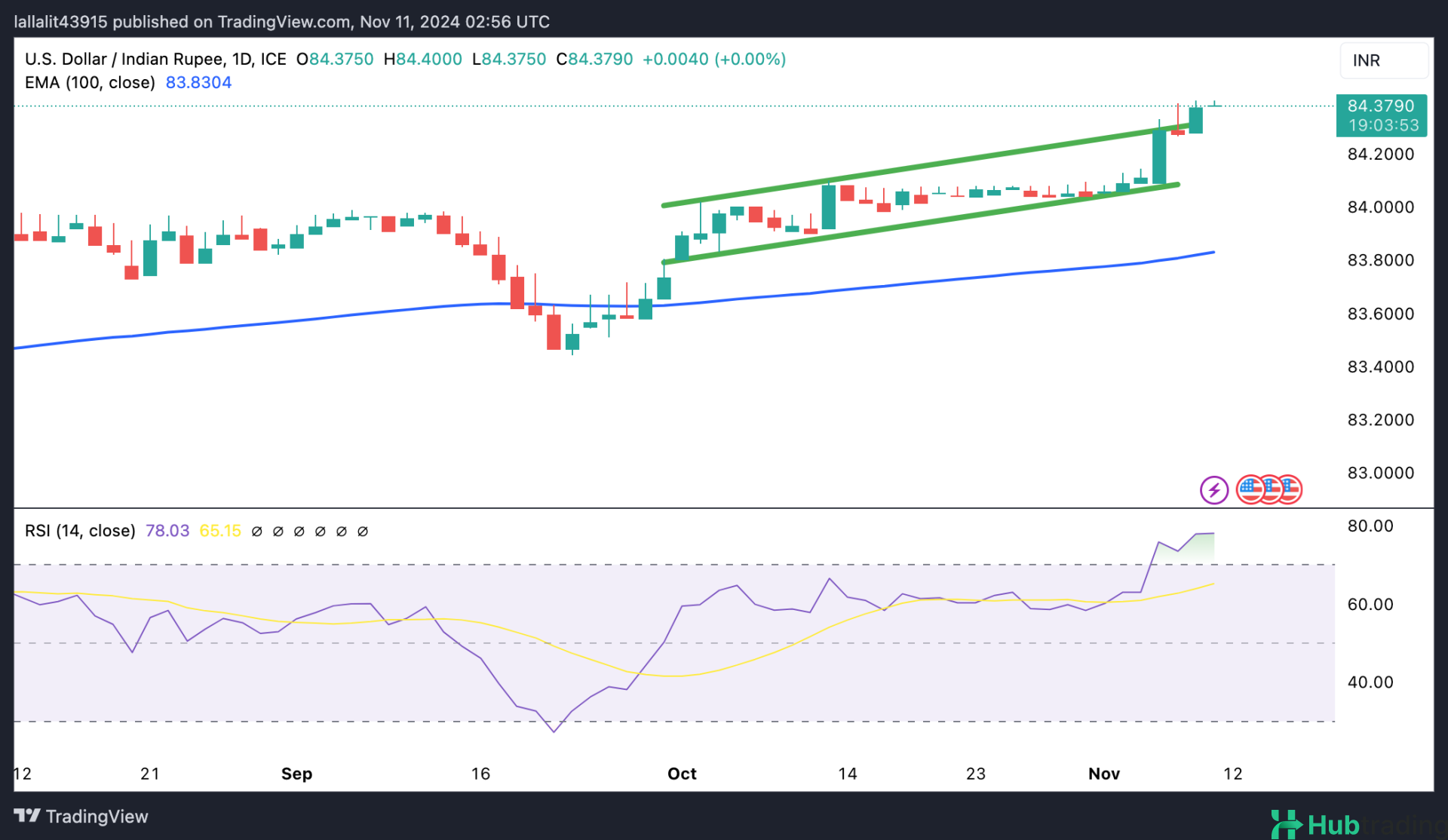The Indian Rupee (INR) weakened to an all-time low on Monday, pressured by continued foreign equity outflows and expectations of a stronger US Dollar, fueled by Donald Trump’s election victory and rising US bond yields. The INR’s losses were partially offset by a drop in crude oil prices, which could help limit further downside given India’s position as the world’s third-largest oil importer.
Additionally, the Reserve Bank of India’s (RBI) intervention to sell US Dollars is expected to provide some support. Traders are now focused on India’s October Consumer Price Index (CPI) report, due on Tuesday, while the US CPI report is scheduled for release on Wednesday.
Daily Digest Market Movers: INR faces multiple challenges amid foreign outflows
- Foreign investors have pulled over $1.5 billion from Indian equities in November, following $11 billion in outflows in October.
- Societe Generale notes that foreign equity outflows remain a key factor for USD/INR direction, but it is too early to expect them to end.
- India’s October CPI inflation is forecast to rise to 5.80% YoY from 5.49% in September.
- US consumer sentiment improved in November, with the University of Michigan's index rising to 73.0 from 70.5, exceeding expectations.
- Minneapolis Fed President Neel Kashkari emphasized the US economy’s strength but noted the Fed still has work to do in controlling inflation.
Technical Analysis: USD/INR maintains bullish trend, RSI signals overbought conditions
The USD/INR pair remains on a bullish trajectory, holding above the key 100-day Exponential Moving Average (EMA). However, the 14-day Relative Strength Index (RSI) is in overbought territory near 77.75, suggesting potential for a short-term consolidation before further gains.
If buying momentum persists, the next resistance levels are at 84.50 and the psychological barrier of 85.00.
On the downside, a drop below 84.05-84.10 could signal a pullback toward 83.83 (100-day EMA) and further to 83.46 (September low).






